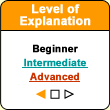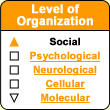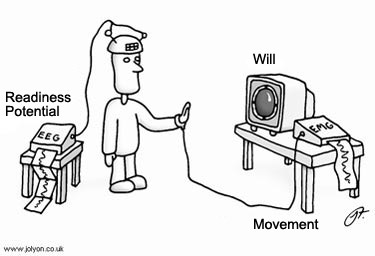|
|
| Funding for this site is provided by readers like you. | |
|
|
|
|
|||||
|
|
|||||||
|
|
|
|
| |
| |
Where does human consciousness come from? Not many of us would say that the simplest forms of life, such as bacteria, have consciousness. But many more of us would attribute some form of consciousness to our dogs or cats, or to porpoises, or to the great apes (with whom we have ancestors in common). It therefore follows that consciousness must have emerged as nervous systems grew more complex in the course of the evolution of species. For many people, this implies that consciousness must have given some advantage to those species that evolved a particular form of it. That is why so much has been written about the possible functions of consciousness: the question of its origins is intimately linked to the role that we ascribe to it. One of the most common approaches is to say that consciousness may have helped in solving the kinds of problems that our primate ancestors encountered. Because most primates live in social groups, each individual must deal with serious problems arising out of his or her complex relationships with the other members of the group. For this reason, many authors think that the evolution of our intellect occurred much more in response to the complexities of this social world than in response to the physical environment. Before we can properly consider these social theories of the origin of human consciousness, we must remember that merely forming a society in no way guarantees that a species will evolve a large brain that is capable of being conscious. For example, ants form societies but do not recognize themselves as individuals. Every ant is interchangeable with every other, because they all display the same behaviour, which is genetically determined in their nervous system. In contrast, those animals that learn most of their behaviours are not so readily interchangeable. Every individual has its own habits and its own temperament. Hence it becomes important for the members of a group to be able to distinguish one another visually, so that they can know, for example, who is willing to share food with them, who is likely to help them fight off predators, or who may potentially return a favour. It was in this way that the specialized neuronal system that performs facial recognition may have evolved, because it confers a definite evolutionary advantage. But to operationalize this advantage, individuals must be able not only to recognize each of the other members of their group individually, but also to predict how each of them will behave. It is this ability to develop a “theory of mind” regarding other individuals that people suffering from autism seem to have lost (see sidebar). But if our brains function normally, then when we meet other human beings, we immediately tend to attribute certain mental states to them. This predisposition is so strong in human beings that it can be triggered by any object that can be identified as an agent capable of intentionality. Indeed, since the dawn of time, human beings have attributed human-like intentions to wild and domestic animals, the planets, the wind, the sea, volcanoes, and, more recently, even to cars and boats.
In the course of their development, children gradually come to understand that other people have desires, intentions, and motivations—in short, a different perspective from their own. Many authors believe that consciousness of self emerged gradually over the course of evolution as social groups became more complex, thus conferring an advantage on individuals who could put themselves in someone else’s skin. Nicholas Humphrey, for example, believes that it was this development of a theory of mind for other people that eventually gave us the ability to construct a theory of mind applied to ourselves and thereby recognize our own desires, intentions, and motivations—in other words, the beginnings of something like subjective consciousness.
|
| |||||||||||||||||||||||||||||||||||||||||||||||||||||||
|
If they had to give out an award for the most hotly debated philosophical question in history, the prize would probably go to the question of free will. At first glance, nothing might seem more natural than to think that all of us are the authors of our own actions. But even in the very earliest days of ancient Greece, a growing awareness of the determinism of the laws of nature began to shed doubt on just how much free will human beings had. Because if the universe follows deterministic laws, then everything that happens is inevitable, and there is no longer any place for our free will. As you can imagine, this argument that everything we do is determined by causes beyond our control has important moral implications —in other words, social implications for our relationship with other people. On one side of the resulting vigorous debate are those who see a major incompatibility between this position and free will: they say that if the universe is deterministic, and given that we are part of it and necessarily subject to its laws, then free will can be nothing but an illusion. On the other side of the debate are those who advance various arguments to attempt to salvage free will and make it compatible with the deterministic nature of the universe (see sidebar). They have a strong incentive to do so, because our sense of being the source of our own actions is very powerful. At any given moment, we naturally feel that it is “we” who are causing our actions by consciously deciding to take them. The question of free will can therefore be restated as follows: does voluntary consciousness in fact play a role in our decisionmaking? To analyze this question more clearly, we must first draw a distinction. It is one thing to say that there can be an agent who can cause a certain number of effects in the world; it is another to say that voluntary consciousness is the first cause of these effects. Human beings, like any other animals, are very definitely agents, in the sense that they are constantly acting upon the world around them. But do the voluntary movements that are the source of their actions originate in their consciousness? That is the question. One tool that may help us to answer this question consists of brain-imaging technologies that let us observe the dynamics of the neuronal activation associated with voluntary actions (follow the Tool Module link to the left). Using these technologies, scientists have observed that our gestures are initiated in the prefrontal areas of the brain. These areas then send signals to the premotor areas, which program the movements in detail, and then to the motor areas that cause them to be executed. The process for language is similar: Broca’s area produces the motor output signal that ultimately activates the muscles of the mouth and larynx whereby we speak. Because this is the case, we can refine our question a bit further and restate it again, as follows: are we capable of consciously triggering the brain activity that then seems to lead irretrievably to a voluntary action? For us to have this capability, our conscious decisions would of course have to precede, even if by only the briefest interval, the brain activity associated with preparing and then executing our voluntary gestures. Though the brain-imaging studies just described date from the 1990s, scientists have known since the 1960s that when subjects are monitored on an electroencephalogram (EEG), the EEG trace always shows a “readiness potential” preceding any voluntary motor action: a large deflection in the trace, slightly less than 1 second before the action itself. This observation led neurophysiologist Benjamin Libet to conduct one of the most controversial experiments in the history of the neurosciences. Libet simply asked himself whether this meant that the individual experienced the conscious desire to act slightly less than 1 second before any voluntary action. He reasoned that if it is in fact the conscious decision that initiates the action, then this subjective feeling of consciously wanting to take this action must occur before, or at worst, at the same time as, the start of the “readiness potential”.
Libet’s results showed that it was the readiness potential that began first, about 550 milliseconds (ms) before the action. It was only after that—a good 350 ms later—that the subject reported consciously commanding the movement, which finally occurred 200 ms later (see the figure below).
In any case, this brings us back to the hypothesis that our subjective consciousness may be only an illusion, as some have long argued and as this experiment seems to demonstrate. But it is worth remembering that an illusion is not something that doesn’t exist, but rather something that is not what it appears to be. The persistent subjective impression that we are at the origin of our actions might be quite real but not what it appears to be, that is, not the first cause of all our voluntary behaviours. If it is not, then we have to ask ourselves how we can learn to live with other conceptions of free will. |
| |
|
|
|
|
|
|
|
|





